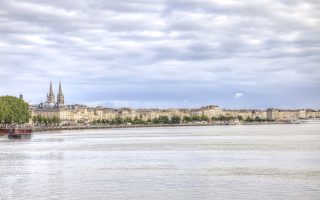Interview with Author Jeffrey Greene of “Wild Edibles”
Jeffrey Greene was born and raised in New England. For the last 25 years, he has lived part of the time in Paris, and part of the time in Burgundy. He is the author of five collections of poetry and four books of personalized nonfiction including French Spirits, The Golden-Bristled Boar, and In Pursuit of Wild Edibles, all based on his life in France. He is the recipient of numerous literary awards and grants, is director of the creative writing program at the American University in Paris, and also teaches in the Pan European Low Residency MFA Program. He will be talking about his latest book, In Pursuit of Wild Edibles: A Forager’s Tour, at the American University in Paris on July 11, and at Parler Paris Après Midi on September 13. Recently returned from a U.S. book tour, he graciously accepted the invitation to answer Janet Hulstrand’s questions via e-mail.
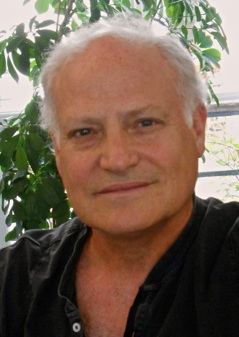
Author Jeffrey Greene
When did you first come to France, what were the circumstances that brought you here, and why did you decide to stay?
Among the last things I ever imagined was that I would end up living in Paris. My grandmother, a notoriously dangerous cook, made a send-off lunch for me before my first flight to Paris. She’d mixed up the dates and kept salads for a week before serving them. I arrived with such severe food poisoning that the city was a hallucinogenic swirl of winding staircases and pungent cafés and boulangeries. I couldn’t tell north from south, Left Bank from Right.
The life-changer occurred when I was finishing my Ph.D. in Houston, Texas. I received an elated call from my mother saying she would spend her sabbatical at the Institute Pasteur. “Wouldn’t you love to come and write for a year?” she asked. “We’ll live on the Ile Saint-Louis.” The responsible alternative would have been to take a junior faculty position, God only knows where. “Sure,” I said. To the great surprise of many, I ended up marrying my mother’s boss, Mary.
Can you tell us a little bit about how you and your wife came to be the owners of an ancient presbytery in a tiny little village in Burgundy? What has being part-time residents of this village meant to you, and how has it changed your lives?
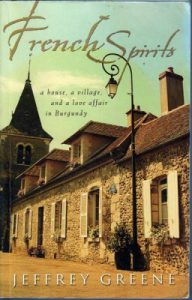
“French Spirits” by Jeffrey Greene
Hardly anyone is rational when buying a country home in France. A home-finding fever takes over and you begin dreaming yourself into new, exciting, and even impossible worlds. Mary, though far more rational and practical than I, caught the fever first, even before I met her. She yearned for a rural refuge in Burgundy, a region she loved for the rolling landscape with vineyards, its extraordinary restaurants, and the lovely austerity of its Romanesque churches. She introduced me to this region, and I had no immunity to the fever. My delusion was to recreate something of my idyllic childhood home in rural Connecticut. After some near-disastrous candidates–expensive wrecked mills and an inaccessible farmhouse–an agent sent us to a canal village to see an old presbytery on top of a hill. Mary wept the moment we drove up to the Place de l’Eglise: before us was a gorgeous house with a stone façade and luminous tall windows. After seeing a terrace, and below that an orchard and a prayer path, we bought the house on the spot. The adventures and interactions with our neighbors, and ultimately the story of my mother moving into the house with furniture from my childhood, are recorded in the memoir French Spirits. Now friends are also buying properties in the village, offering new adventures.
JH: What do you love most about living in France?
JG: The way layers of time seem to talk to each other is what I love the most. As I was about to answer this question, the bells rang in the eleventh-century church next door. Those bells knocked us out of bed when we first lived in the old presbytery. Our friends said, “Poor you! The bells!” The bells themselves, centuries old, were named after local noblewomen, Marie Anne and Isabelle. Peasants in the 1600s heard the same bells. In 1429, Joan of Arc passed through our part of Burgundy disguised in men’s armor, and a pot of Roman-Gallo coins was found on our property. The ochre found in the ground near us was used for church frescos, and by Paleolithic Homo sapiens for partial images of now-extinct animals.
In Paris, two blocks from where we live, on one side of the Bon Marché’s grand épicerie, the Hôpital Laennec once served as a hospice for poor women with incurable diseases. On the other side of the Bon Marché, the Virgin Mary appeared before the nun Catherine Labouré to give her the mission of distributing blessed medallions.
Honestly, I could have also answered this question by saying that I love the persistent French artisanal traditions—cheese making, luthiers, and stone carvers—or I could have explained how geographically blessed France is, with three major mountain ranges, and the Atlantic, and the Mediterranean, each region with a very special identity.
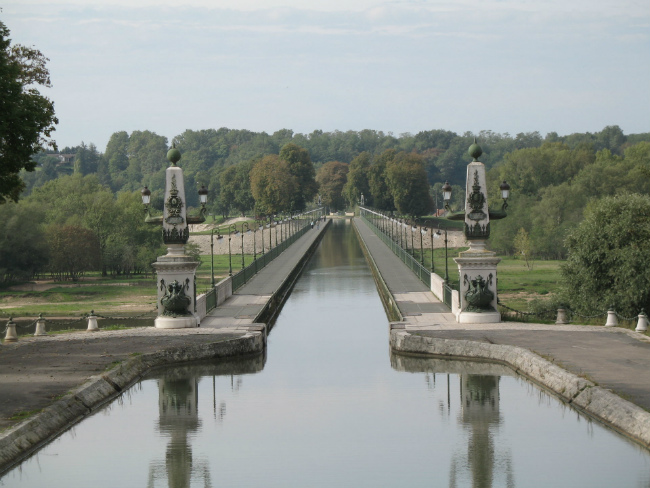
Briare canal. Public domain
The part of Burgundy that you live in is called the Puisaye. Where does this name come from, and how would you describe the spirit of the Puisaye, in a few words?
I often find myself having to describe La Puisaye because even the French tend to know little about it, unless they have read Colette’s memoirs about her childhood there or have taken a pleasure barge on the Briare Canal. It is a small région naturelle in northwest Burgundy that has been called secretive, unknown, watery, and forested. In fact, La Puisaye comes from two Celtic words meaning “pond” and “forest,” naming its most prominent features. It’s a region of woodcutters, potters, and legends.
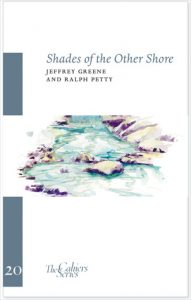
“Shades of the Other Shore” by Jeffrey Greene
You are primarily a poet, and your life in Burgundy figures strongly in a recent collection of your poems, “Shades of the Other Shore.” What was the inspiration for this collection?
The Center for Writers and Translators at the University of Paris solicited me to write Shades of the Other Shore in collaboration with American painter Ralph Petty. I was hugely honored. Their Cahier Series includes some of the most distinguished international authors, including Nobel-Prize winners. This series is unique in that the writing must be new and must address issues of translation. Ralph and I approached the translation assignment in a conceptual way: each interpreting his adopted French landscape—his in the Ardèche, and mine in Burgundy—through our American sensibilities in art, language, and experience. Ralph painted a series of beautiful river views in watercolor, and I wrote a sequence of poems and prose sketches about our village, and some humorous interactions with my mother. The Loing River passes through our village on its way to the Seine, so I was able to work in river references to hook in with Ralph’s images.
How did you come up with the idea of writing your latest book, In Pursuit of Wild Edibles? And what is the most important, most interesting, or most surprising thing you learned in the process of researching and writing it?
In Pursuit of Wild Edibles was my most enjoyable book to write. My mother was a 15-year-old boarding school runaway, and my father, a sculptor, was an escapee from the family fabric business, which is now a part of the Orchard Street Tenement Museum. They knew they’d be poor. But my mother believed if worst came to worst we could live off the land. I was born into their idealistic world. I went back to that idealism in France, and dragged my family and friends into it.
I wrote Shades of the Other Shore and In Pursuit of Wild Edibles at the same time. My first idea for Shades was to impose an Emersonian “transparent-eyeball” type of transcendentalism on the heavily managed French forests near us, many of which still belong to ancient aristocratic French families. The start of this was my new-found passion for finding mushrooms—my French friends insisted that I learn how recognize them, while they shared the secrets and responsibilities of collecting them. Of course there is a big difference between Emerson’s “transparent eyeball” transcendentalism and the French forest, where once upon a time if you stole an apple you might end up like the fugitive Jean Valjean in Les Miserables.
The most special experience was leaving my university class in Paris on a Thursday and driving to a wild food workshop in the Polish Carpathians on the Ukraine border. I went to see a gifted Polish botanist, who has become a guru of edible plants and insects. That experience changed the way I see the beauty and structure of plants, not to mention Polish people.
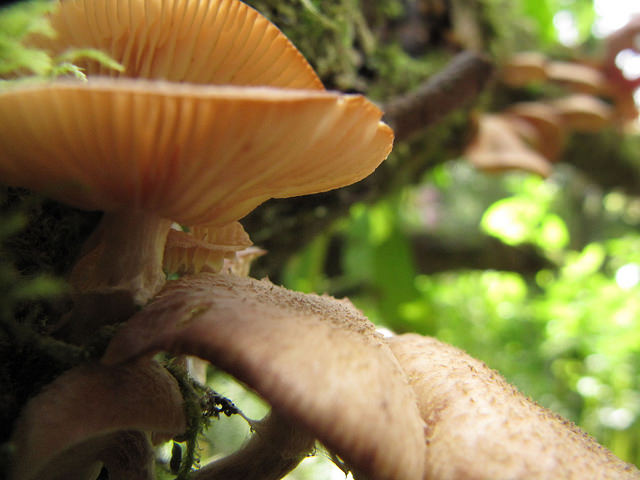
wild mushrooms by Alex Lee/Flickr
What is the most important thing for people to know about gathering wild mushrooms?
I’ve always found mushrooms gorgeous in form, structure, and color. Some have a wonderful earthy odor. They play a hugely important role in the ecology of the forest. Some live symbiotically with certain trees, others are parasitic, thriving on weakened plant life, and yet others decompose dead trees and leaf litter. All of them contribute to making rich soil. A French mushroom collector who trained me was adamant about my respecting the forest. “Don’t disturb any mushroom unless you intend to pick it. And then you must cut the mushroom carefully at ground level,” she insisted. “You must protect the mycelia.”
I know I should remind people of how dangerous mushrooming can be. France is blessed with pharmacies that offer mushroom identification if there is any doubt. The pharmacists are carefully trained. This is not necessarily true elsewhere.
While you credit various sources with the inspiration for some of the recipes you provide in the last section of In Pursuit of Wild Edibles, it seems like you–and/or Mary, and/or your Mom–created most, if not all of them, yourselves, or working together. Did you really? And if so, would you like to say anything about this creative process?
Writing this part of the book was just plain fun. My mother is very knowledgeable about food, starting with her childhood experiences in top restaurant kitchens, her mother being a maitre d’. Mary adores French cooking and has mastered it, and I am a hit-and-miss experimenter with international cuisine. Almost all recipes have their own cultural legacies, and what we did was mainly to improvise traditional dishes using products that can be found at the seaside, in the forests, or in even our backyard. We argued, experimented, and tried variations on different themes to propose whole menus based on exciting wild foods.
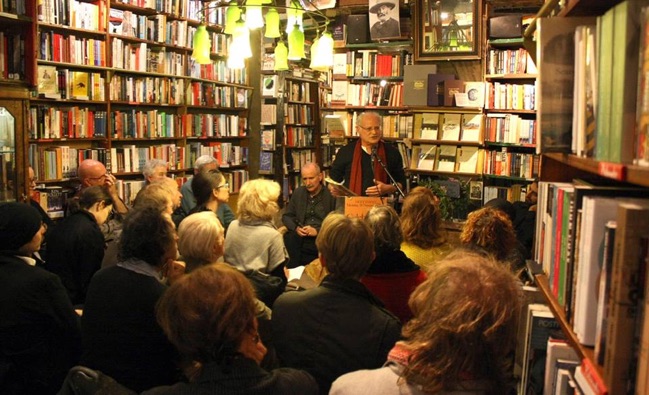
Author Jeffrey Greene at a book reading
You’ve just completed a book tour in the U.S. When you are able to return to your desk and start focusing on your writing again, what will you be writing about?
Like most writers, I have several projects going, but one that may be of interest here seems to be taking hold. Mary had a magnificent cello made for her by a master luthier in Angers. The materials, the process of assembly, and the outstanding craftsmanship enthralled us. The rue du Rome is a very special part of Paris known for its instrument makers. I even have a childhood friend who has become a master guitar maker. We have visited Cremona, home of Stradivarius, Amati, and Guarneri stringed instruments. Continuing in the vein of my nature books, I am going to explore the source of the materials and how they are treated.
It seems to me that with three of your books–French Spirits; the Golden-Bristled Boar; and now In Pursuit of Wild Edibles–you have created almost a kind of trilogy featuring the people, the animals, and the plants of the Puisaye, although In Pursuit of Wild Edibles actually takes you quite far and wide, including across (and into!) the ocean. In any case, how would you describe the relationship of these three books to each other, and within your body of work?
Well, I wrote French Spirits first, really just for the fun of it. At worst, it would be a kind guest book to entertain our visitors. I didn’t know that it would sell in different parts of the world, and get translated. At the time I wrote that book, many readers were enamored with Peter Mayle and Frances Mayes, and I wanted to write something different from their sorts of expat books. I wanted to depict a French paysage that is not particularly touristic, and try to create a portrait of the real locals interacting with my family. Once I realized that I could write and publish nonfiction along with poetry, I felt a strong urge to write about something deeply important to me, nature. I followed French Spirits with Water from Stone, a book about land restoration, the protection of endangered species, and environmental education, based on an extraordinary ranch project in the Texas Hill Country. Then I followed that with The Golden-Bristled Boar, which emanates from my country place in Burgundy. I was astonished that hardly anyone had written about one of the most significant creatures in the development of human culture, which is now a worldwide outlaw animal. In Pursuit of Wild Edibles is primarily based in Burgundy, but it does take the reader to many parts of France, particularly the Bay of Mont Saint-Michel, the Cancale Area, the Bay of Morlaix, the Auvergne, the Marennes, and the Landes. Each of the books you name has some of the same cast of characters, so, yes, it’s a kind of trilogy, but more hopefully, a series that will continue.
Share to: Facebook Twitter LinkedIn Email
Leave a reply
Your email address will not be published. Required fields are marked *





